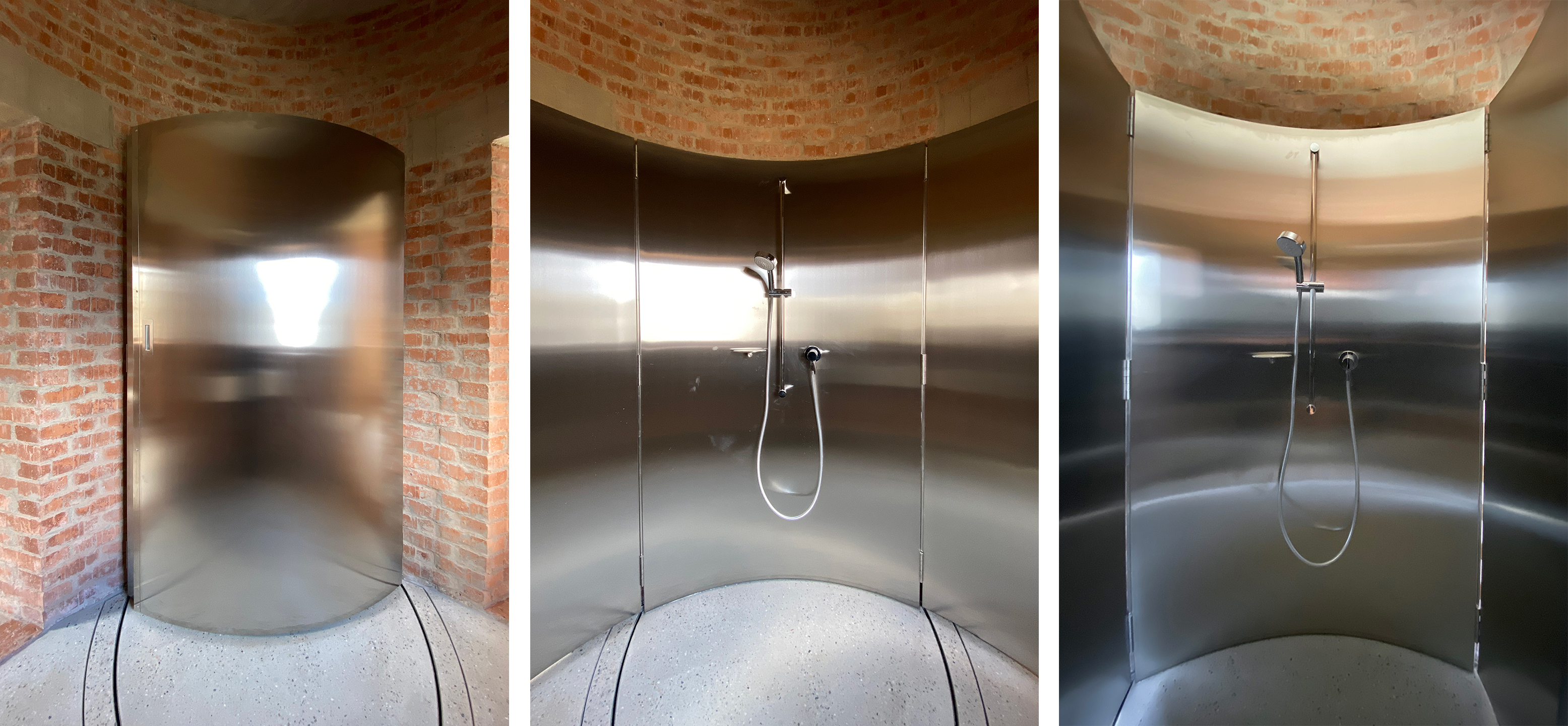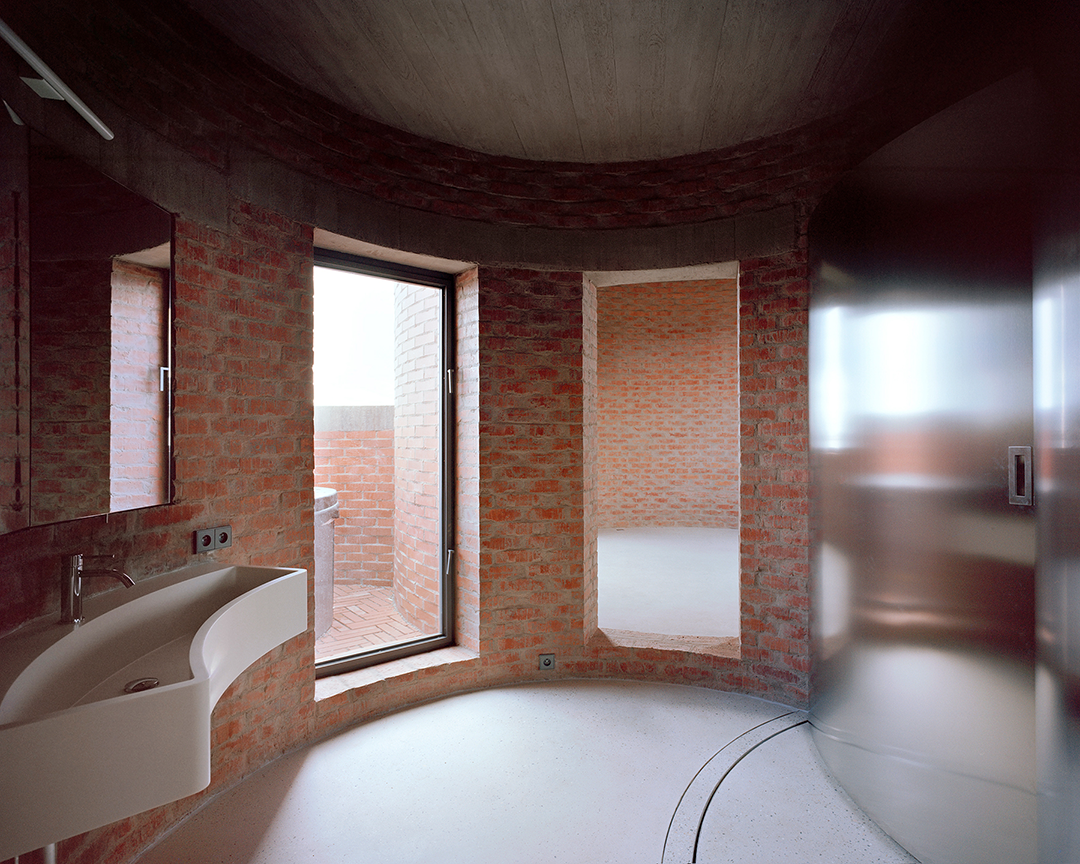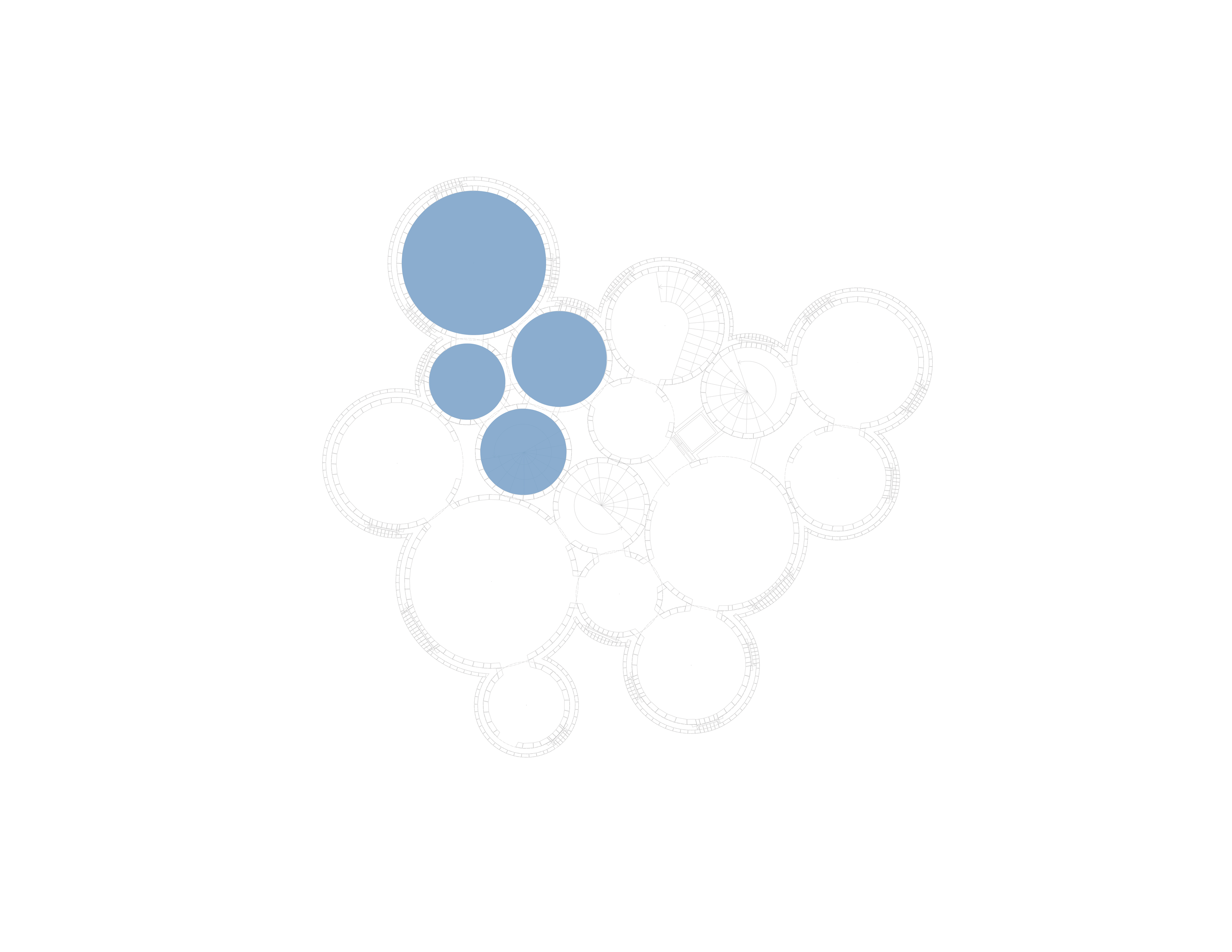

设计单位 Christian Kerez
项目地点 捷克布拉格
建成时间 2021年
场地面积 778平方米
建筑面积 317平方米
这座住宅位于布拉格6区,毗邻阿道夫·路斯的穆勒住宅(Villa Müller),包含三套公寓。每套公寓都由大量的小空间组成。整个房子有39间房间,房间面积从4平方米到18平方米不等,高度从2.35米到4.9米不等。算上圆形房间之间夹着的19个空间,这幢房子总共有58个小空间。
This house contains three apartments and is located in Prague 6, within close proximity to Villa Müller by Adolf Loos. Each apartment has a large number of spaces. The whole house has thirty-nine rooms. Their surfaces changes from 4 m² to 18 m² and their height changes form 2.35 m to 4.9 m. There are nineteen spaces in between the circular rooms. All together the house has fifty-eight rooms.




在同一套公寓内,所有小空间都是相互连通且开放的。由于互相重叠的圆形房间大小不一,这些开口的方向不断变化,难以预测。这些大小不等、位置随机的开口形成了一个迷宫般的空间。由于空间在自身内部互相连接,设计在实际上有限的边界内,给人带来一种空间无限延展扩张的印象,而这正是布局严格遵循几何排列的意图所在。
All spaces within one apartment are open to one another. The direction of these openings changes constantly in an unpredictable way due to the different sizes of the overlapping circular rooms. These various and randomly positioned openings create a labyrinth like space, a space which opens within itself, creating an impression of expansion within actually limited boundaries, which is the intention of the rigorous geometrical arrangement.






圆形房间之间连接方式随着楼层的不同而变化。一个中心空间与旁边相邻的空间可以共同构成一个环绕式空间,而这个环绕式空间又可以变为一个矩阵、一个空间网络或一个轴向排列的布局。
How the circular rooms are connected changes from one level to another. A central space with adjacent spaces around it can change to a circuit of spaces, which can change again to a grid, a network of spaces, or to an axial arrangement.




电梯、储藏室和卫生设施空间被夹在圆形空间之间。这些空间带有门,并且是微小的、分散的、向外凸的,与主要空间,即开放的、形状完整的圆形凹空间相对立。圆形的空间十分简约,里面仅有的小型可移动家具都是经建筑师安排或设计。
The spaces for the elevator, storage, and sanitary are located in between the circular spaces. These intermediate spaces with doors are minimal, fragmented, convex, and situated in opposition to the open, perfectly shaped round concave main spaces which only have small removable furniture arranged or designed by the architect.





从外部看,每个空间都属于同一组竖向圆柱体空间。然而,从砖塔结构的内部布局来看,房间分属于不同的主人。随着楼层不同,每套公寓在房子内所占据的房间位置都在变化着。
Each space can be seen as a part of a vertical shaft from the outside. However, from the inside of the brick tower structure, the rooms belong to different owners because the apartments change their position from one floor to the other within the house.


整个项目基于一种非常传统甚至是古老的圈式砌砖方法,这种施工方式比起正交式的轴网更容易随着现场情况进行调整。
The whole project is based on a very traditional, almost archaic in construction method of brick circles which are easier to define on site then orthogonal spaces.

设计图纸 ▽





完整项目信息
项⽬名称:House Okamura
项⽬地点:Prague, Czech Republic
设计单位:Christian Kerez
主创建筑师:Christian Kerez
设计团队完整名单:Martin Kugelmeier, Miroslav Malý, Zdeněk Chmel , Martin Binder, Jonathan Schönberger, Ernest Babyn, Patrick Perren, Bartosz Bukowski, Caio Barboza, Michelle Nägeli, Francesca d'Apuzzo, Marina Montresor, Nathanael Weiss, Werner Schührer
设计时间:2013—2021
规划:Jiří Hušek, Petr Husák
建筑:Christian Kerez
结构:Cobra ateliér s.r.o./ Jan Česal, Jiří Kopecký
室内:Christian Kerez
施⼯:AMO s.r.o
摄影师:Maxime Delvaux
本文由Christian Kerez授权有方发布。欢迎转发,禁止以有方编辑版本转载。
上一篇:阿联酋如何造新城?福斯特团队操刀规划,Masdar City进展一览
下一篇:华黎TAO新作:缝隙空间,深圳南头古城“同源馆· 行政同属 ”展馆